Strategy of the Month: Teaching Basic Requests
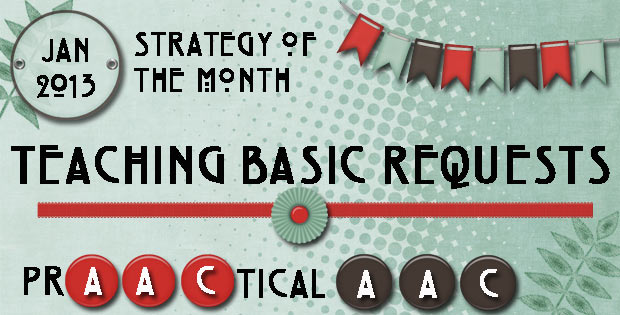
With the start of the new year, we thought it would be a good time to get back to basics. So this month, we’ll talk about the nitty gritty of teaching basic requesting to someone who is first learning to communicate using AAC.
For learners who are not sending purposeful communication signals or those who seem unaware that communication involves 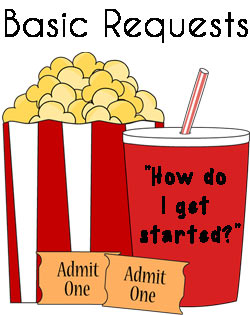 interaction with another person, we think it makes sense to consider using the PECS curriculum. Why? Because the act of being assisted in physically giving a picture symbol to another person in exchange for a desired object can be an efficient way for someone to gain awareness of two critical principles. First, they learn that communication gives them the power to impact their environment. Secondly, the direct exchange highlights the fact that communication involves two people. As the PECS curriculum is already well established, its procedures will not be addressed in this post
interaction with another person, we think it makes sense to consider using the PECS curriculum. Why? Because the act of being assisted in physically giving a picture symbol to another person in exchange for a desired object can be an efficient way for someone to gain awareness of two critical principles. First, they learn that communication gives them the power to impact their environment. Secondly, the direct exchange highlights the fact that communication involves two people. As the PECS curriculum is already well established, its procedures will not be addressed in this post
For beginning communicators who are sending signals intentionally to another person with an expectation that something will happen as a result, we often choose another approach. In this post, we detail a basic instructional procedure for using picture (or object) symbols to make a simple request. Using these procedures, SLPs can systematically move AAC learners to differentiating between symbols and making a conscious selection.
Most SLPs begin teaching requests using symbols for objects that the learner likes. That’s an approach we use as well. Often, however, the first symbolic request we teach is for ‘more.’ Focusing on a single symbol for recurrence allows us to quickly move between activities and materials without having to change to using different pictures. The symbol for ‘more’ is applicable whether we are listening to music, playing at the water table, reading a book, putting together puzzles, or just interacting with preferred toys.
Key Concepts
- Controlled access to preferred activities/materials: To teach someone to make a request, you have to first engage them in activities that they like. At some point, we would then interrupt their access to the desired materials (e.g., “My turn”) so that they are motivated to make a request. This kind of communication temptation can be used over and over with a wide variety of materials and activities.
- Providing easy access to the picture symbol: Learners who are just getting started in their AAC journeys may have very limited tolerance for frustration. We can make the learning process easier by having the symbol be readily accessible. In most cases that means two things: making the symbol large and holding it close to them. That allows the learner to come into contact with the symbol quickly and easily. At the earliest stages, they are not touching the symbol because they understand its meaning, but rather just trying to get it out of the way so that they can reach their preferred items. Comprehension of what the symbol means comes later on through the repeated experience of cause (touching the symbol for ‘more’) and effect (getting more of the object/activity). Learning comes through doing.
- Contingent responding: Once a learner touches the symbol, we quickly label it (“more”) and give them whatever the symbol represents (in this case, ‘more’ tickles, goldfish, puzzle pieces, etc). In the beginning, their touches are purely accidental. Nonetheless, we treat that action as a purposeful communicative act. They are learning by doing. We always respond as if what they touched is what they want.Systematically increasing task difficulty: In the beginning, we start with a single symbol and gradually add distractors. These can be blank distractors at first and then competing symbols representing other activities/materials later on.
- In later stages, when they touch a blank distractor we interpret that as a request for ‘nothing’ and respond accordingly. After a brief pause for the ‘nothingness’ to sink in, we can give them another chance to ask for what they want. If the learner has a low tolerance for error, we can subtly guide him to the correct response by moving the target symbol closer
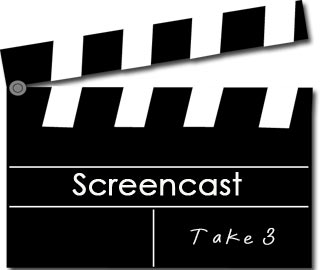 or providing a gestural prompt. We can also take our own turn, using aided language input to model the correct response.
or providing a gestural prompt. We can also take our own turn, using aided language input to model the correct response.
- In later stages, when they touch a blank distractor we interpret that as a request for ‘nothing’ and respond accordingly. After a brief pause for the ‘nothingness’ to sink in, we can give them another chance to ask for what they want. If the learner has a low tolerance for error, we can subtly guide him to the correct response by moving the target symbol closer
- Systematically increasing task difficulty: In the beginning, we start with a single symbol and gradually add distractors. These can be blank distractors at first and then competing symbols representing other activities/materials later on.
We’ve expanded on this process in a set of three brief screencasts.
Part 1
Part 2
Part 3
This is just one of a few ways to get the AAC ball rolling with beginning communicators. We hope this information has been helpful and would love to hear the prAACtical ways that you teach early requesting in AAC learners.
Filed under: Strategy of the Month
Tagged With: Instruction, language intervention, requesting, teaching
This post was written by Carole Zangari

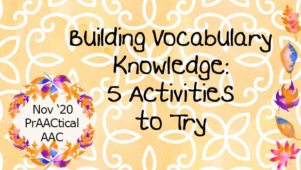
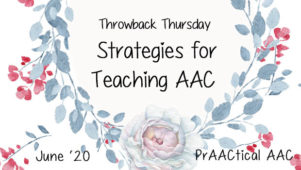
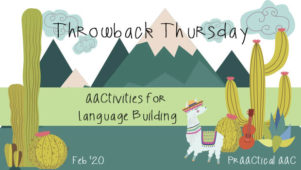
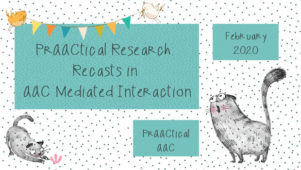
1 Comment
This is wonderful! I am a CF SLP and just started working at a school for autism and multiple disabilites (ages 3-21). I am getting a little oerwhelmed learning about all these different types of communication, and this post was really informative and helpful!